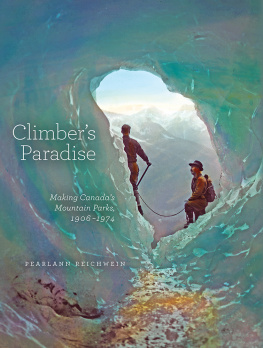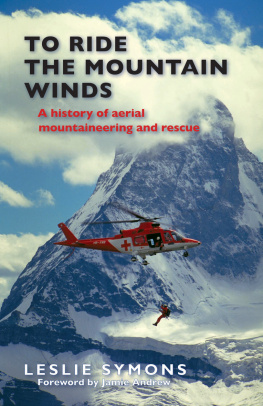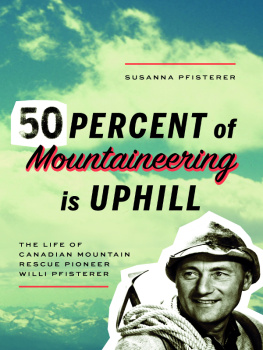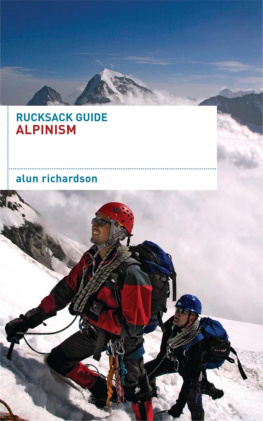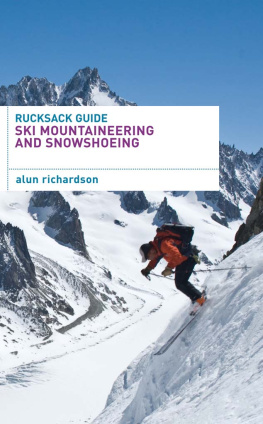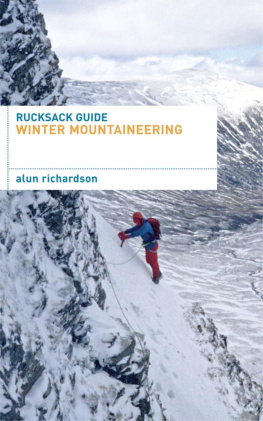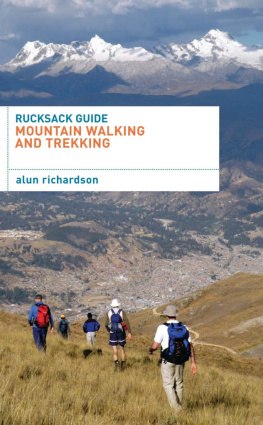
Published by
The University of Alberta Press
Ring House 2
Edmonton, Alberta, Canada T6G 2E1
www.uap.ualberta.ca
MOUNTAIN CAIRNS A series on the history and culture of the Canadian Rocky Mountains.
Copyright 2014 PearlAnn Reichwein
LIBRARY AND ARCHIVES CANADA CATALOGUING IN PUBLICATION
Reichwein, PearlAnn, 1966, author
Climbers paradise : making Canadas mountain parks, 19061974 / PearlAnn Reichwein.
(Mountain cairns)
Includes bibliographical references and index.
Issued in print and electronic formats.
ISBN 9780888646743 (pbk.).ISBN 9780888648280 (epub).ISBN 9780888648297 (Amazon kindle).ISBN 9780888648303 (pdf)
1. National parks and reservesRocky Mountains, Canadian (B.C. and Alta.)History20th century. 2. MountaineeringRocky Mountains, Canadian (B.C. and Alta.)History20th century. 3. Outdoor recreationRocky Mountains, Canadian (B.C. and Alta.)History20th century. 4. Rocky Mountains, Canadian (B.C. and Alta.)History20th century. 5. Alpine Club of CanadaHistory20th century. I. Title. II. Series: Mountain cairns
FC219.R42 2014 333.783097110904
C20149023138
C20149023146
Index available in print and PDF editions.
First edition, rst printing, 2014.
First electronic edition, 2014.
Digital conversion by Transforma Pvt. Ltd.
Copyediting and proofreading by Meaghan Craven.
Map by Wendy Johnson.
Indexing by Adrian Mather.
Cover design by Alan Brownoff.
All rights reserved. No part of this publication may be reproduced, stored in a retrieval system, or transmitted in any form or by any means (electronic, mechanical, photocopying, recording, or otherwise) without prior written consent. Contact the University of Alberta Press for further details.
The University of Alberta Press gratefully acknowledges the support received for its publishing program from The Canada Council for the Arts. The University of Alberta Press also gratefully acknowledges the nancial support of the Government of Canada through the Canada Book Fund (CBF) and the Government of Alberta through the Alberta Multimedia Development Fund (AMDF) for its publishing activities.

Title page photograph: Three climbers traverse on ascent of Mount Robson during ACC Mount Robson Camp, 1924. Harry Pollard photograph. [WMCR, V14/AC192P/011]
Front cover photograph: Ice Cave, Illecillewaet Glacier showing Swiss Peaks, Glacier National Park, British Columbia, n.d. Harry Pollard photograph, hand-tinted lantern slide. [WMCR, V14, AC176P/11]
To my parents
Each one of us dreams dreams and sees visions. The peaks we climb in our reveries are nobler than any we can hope to ascend in real life, but it is our visionary mountains which govern our actual accomplishments.
ACC PRESIDENT CYRIL WATES
The Gazette , October 1938
Contents
Reconnections in a Living World
List of Vignettes
Electronic versions of this book have been adjusted to fit the ebook format. Vignettes (or sidebars) have been moved to the end of each chapter. Note numbering remains consistent with the print edition.
Preface
AS I LOOK DOWN from the snowcapped ridge of Mount Victoria, dawn pours into Banff National Park on my right while shadows still linger in Yoho on my left. Many mountaineers have come to know this place as the roof of the Rockies on the Great Divide. The horn of Mount Assiniboine juts up to the south, the Wapta Icefields spread out to the north, the Sawback Range to the east, and, far out on the western horizon, forest-fire haze clings to the distant peaks of the Selkirks. I spot fresh tracks in the snow far below as I climb down from the ridge. They run up and over Abbot Pass near the refuge hut and lead in various directions to Mount Lefroy, to Mount Victoria, and to a watering spot on the lower Victoria Glacier. Tracks streak down through the scree to Lake Oesa. Mountaineers have been here. The historical footsteps, trails, and ascents of mountaineers point south, east, west, and farther north to other parks and other mountains. And to other stories.
The history of Canadas mountain parks and the Alpine Club of Canada (ACC) is the focus of this volume, and the narrative that follows is situated in the mountain national parks of Alberta, British Columbia, and the Yukon Territory. Banff, Yoho, Jasper, and Kootenay national parks in the main ranges of the Rocky Mountains in Alberta and British Columbia figure prominently in the history of the ACC. Other points of interest include Glacier and Mount Revelstoke national parks in the Columbia Mountains of British Columbia and Waterton Lakes National Park in the southern Alberta Rockies. The term Rockies is often applied in popular usage to include all these areas, but technically the Rocky Mountain Trench separates the Rocky Mountains from the Columbia Mountains to the west. These areas are also linked in the popular imagination as Canadian mountain parks.
Living and working in the mountain national parks in Alberta and British Columbia in the 1990s grounded my research and enriched my attachment to these places, but it also highlighted their contradictions. New subdivisions outraced the mountain pine beetle up the slopes of Banff town. Elk and caribou appeared on the local menu as often as they did on the traffic signs in Jasper that warned drivers to slow down. Semi-trailers and SUVs pushed 120 km/h in 90 km/h park zones on the Yellowhead and TransCanada highways. Every year wild bears in Banff congregated on the railways tracks to eat grain spilled from boxcars, and tourists congregated to watch.
Parks Canada wanted the public to learn about the mountain parks, but, in the midst of the recessionary 1990s, it went in the opposite direction when it raised the entry fees at the park gate and introduced cost-recovery user fees for its guided public interpretive hikes. During those same years, affordable housing for residents and transient workers was scarce. I began to notice that marginal incomes and poverty are often masked as lifestyle in national parks and seasonal mountain tourism towns. The federal BanffBow Valley Study (1996) was struck to investigate such environmental, social, cultural, and economic concerns, but it excluded major related issues from its terms of reference, such as the twinning of the TransCanada Highway and the future of Lake Louise. At the same time, my reading at the archives made clear that the national parks in the Canadian Rockies had never been an unpeopled landscape, despite the powerful cultural mythologies of pristine wilderness that veil the historical presence of women, men, and children in a landscape that has a human history of class, gender, and ancestry as much as it has mountains. The present function and politics of parks affect the history we assign to these places; I realized I had to peel back layers of memory to better understand parks as historical landscapes.
Studying the ACC led me to view mountaineering as a way of understanding the people, places, and politics of mountain parks. I went to the places I had read about in one of Canadas longest running periodicals, the Canadian Alpine Journal ( CAJ ), published by the ACC since 1907. In a 2009 editorial responding to criticism of its emphasis on elite climbing performance, Sean Isaac writes, The purpose of the CAJ is to record the history of Canadian climbing, year by year. Like it or not, much of what makes climbing history is cutting-edge ascents. In fact, that is the definition of history: a chronological timeline punctuated by important events. Academics must attend to enduring sport narratives and popular conceptions of history, and how they serve to entrench or challenge power. These debates also prevail among climbers and in the pages of the CAJ . The history of mountaineering in Canada is not a unilinear process of sport progress or a coming of age, but a diverse and contested field of ongoing social relations interacting in specific times and places as a dynamic site of culture.
Next page
